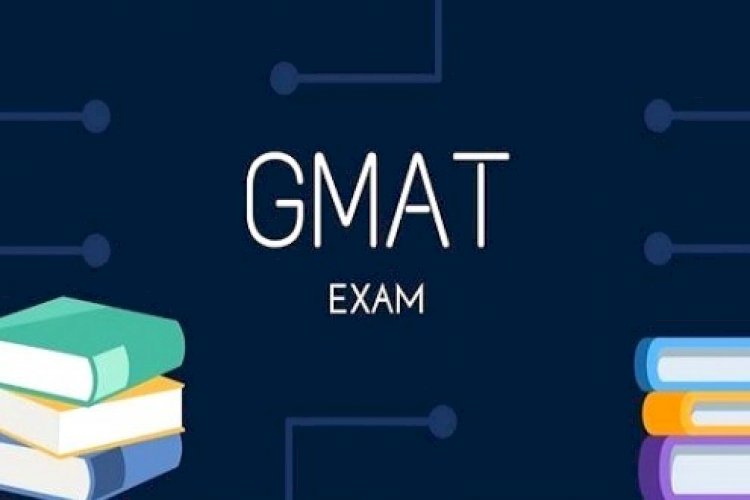
History
The GMAT, which stands for Graduate Management Admissions Test, has been administered in the United States since 1954. The initial, paper-based version of the test was modeled after the Scholastic Aptitude Test (SAT), and contained no Analytical Writing or Critical Reasoning sections. The computer-adaptive (CAT) format was introduced in 1997, thanks to improvements in interactive technology and data-gathering techniques; nowadays almost all standardized tests are computerized in almost all countries.
The players
The GMAT CAT is the work of the Graduate Management Admission Council (GMAC), a non-government organization that mediates between the field of business education and over 130 business schools. The content of the test is designed by ACT, Inc. All testing sessions are administered by Pearson VUE.
The stakes
Although the GMAT is all but a prerequisite for any MBA program in the world, the test measures neither your intelligence nor your likelihood of succeeding in business school. The limitations of standardized tests are well known, and nobody is under the illusion that the GMAT can predict academic success or failure with any authority. Admissions officers also understand that a GMAT score reflects nothing about a candidate’s creativity, personality, business skills or work ethic. While the skills tested do come in handy in academic and business environments, it’s best to think of the GMAT as a test of your ability to handle a set of rules—in short, a test of how well you take tests.
The test
CAT tutorial
Each GMAT session begins with a mandatory CAT tutorial, which will walk you through the test’s format and the computer functions you will need to use in order to select an answer, move on to the next question, display or hide how much time you have left in a section, use the word-processing interface, and access a help screen if necessary. You should only need to consult the tutorial once (if at all)—the CAT is designed to be user-friendly.
Analytical Writing Assessment (AWA)
After you have completed the tutorial, you will begin the GMAT with the Analytical Writing Assessment, for which you must write two essays in the space of 30 minutes each. One essay is an Analysis of an Issue; the other is an Analysis of an Argument. The two may appear in either order. Your task is to write a clear short essay for each topic.
The Analysis of an Issue prompt will ask you to take a stance on a statement or an opinion having to do with some combination of big-ticket topics, such as business, government, education, personal success, ethics, and so on. Your essay should be a well-reasoned defense of a position on one side of the issue (most often agreeing or disagreeing with the statement or opinion), in which you draw on various sources to support your argument.
The Analysis of an Argument prompt will show you a brief argument composed of premises and conclusions—a format with which you’ll become familiar as you study Critical Reasoning. Your job here is to evaluate the logic of the argument (hint: it’s always faulty) and point out ways in which it could be improved.
These essays examine your ability to do original thinking and to get your point across clearly and convincingly. Fortunately, the GMAC publishes all of the possible essay prompts in advance on its website at www.mba.com, so you can get a sense of the kinds of topics you’ll be asked to discuss.
Quantitative and Verbal sections
After the AWA and an optional break, you will have two multiple-choice sections, one Quantitative and one Verbal, that last 75 minutes each.
The Quantitative section tests basic mathematical principles (primarily arithmetic, algebra, and geometry) and has 37 questions and two different question types: Problem Solving and Data Sufficiency. Although these types deal with the same subject matter, they do so in different ways—Problem Solving questions resemble most math problems, while Data Sufficiency is a format unique to the GMAT. The two are mixed in throughout the Quantitative section, but the total proportion will be roughly 2:1—that is, about 24 questions will be Problem Solving and about 13 will be Data Sufficiency.
The Verbal section has 41 questions of three different types: Sentence Correction, which tests grammatical rules; Critical Reasoning, which resembles the Analysis of an Argument essay; and Reading Comprehension, which asks you to answer questions about a short passage. As in the Quantitative section, question types are mixed; you may get three Sentence Correction problems, then two Critical Reasoning problems, and then a Reading Comprehension passage with four questions. (Each Verbal section has four Reading Comprehension passages, whose questions are always grouped together.)
Of the 78 multiple-choice questions on the GMAT, it is a fact that between 20 and 30 percent will not actually impact your score: about 8 of the 37 Quantitative questions and about 11 of the 41 Verbal questions are “equating,” or experimental, problems used by the GMAC for research purposes only. That said, you will have no way of knowing which questions count and which ones are experimental, so you can only approach each question as though it’s important.
Scoring
Unlike multiple-choice tests of yore, on which the only thing that mattered was how many questions you answered correctly, the GMAT has a sophisticated scoring system unto itself. Here it’s not only accuracy that counts but the difficulty of each question too.
The first question on either multiple-choice section is of medium difficulty, corresponding roughly to 500 points. If you answer it correctly, your next question will be more difficult and worth more points (up to 800); if you answer wrong, your next question will be less difficult and worth fewer points (down to 200). The CAT system uses this method to assess your broad score range quickly, and fine-tune it on later questions. A high GMAT score means that you’ve answered many difficult questions correctly.
The respective scores of your Quantitative and Verbal sections are combined to give you a final score out of 800, but the individual section scores are converted and reported, along with percentile information about how well you scored relative to other test takers, on a scale of 0 to 60. An unofficial score for each section will be displayed immediately on your computer screen once you have completed your GMAT session.
Your AWA essays are reported separately and graded on a scale of 1 to 6, in half-point increments. Two readers (one human, one computer—more on this later) will evaluate both essays and award each a score of 1 to 6; those four scores (two readers for two essays) are then averaged. Your official score will include AWA and multiple-choice grades and will be mailed to you about two weeks after your test date.
The CAT
There’s no question that computer-adaptive testing technology has made the GMAT more convenient and efficient: tests can be administered year-round, and results can be reported almost instantly. Thanks to the CAT, the GMAC now also allows you to take the GMAT as many times as you want to, to the limit of once per calendar month. On the test itself, the CAT pays off too: because you can no longer skip hard questions and return to them later, you are allowed 20% more time to work on each question.
On the other hand, there are disadvantages to the CAT, not least for those who aren’t computer literate. Although the GMAT interface is designed to be easy to use and easy to learn, there’s no denying that taking a test on a computer is awkward if you’re not used to reading from a monitor or typing into a word-processing program—both of which are necessary skills, for Reading Comprehension passages and your Analytical Writing essays especially. Also, if you’re computer literate but unused to the American (QWERTY) keyboard layout, now is the time to start getting familiar: the GMAT is administered on an American keyboard, and there’s nothing worse than losing precious essay time because you can’t find the M key.
For its advantages and disadvantages, the main lesson of the (comparatively) new CAT format is that it calls for new strategies. If you’re used to skipping questions and answering them later, you’ll need to learn when to make educated guesses and move on, how to work quickly enough to answer every question in a section, and how to spare yourself the mental anguish of second-guessing an answer you can’t change.
If you’re used to a linear test model whose questions gets harder as the section goes on, you’ll have to remember that questions might get easier or harder depending on how you’re doing—but that you can’t do anything about it besides keep trying to answer every question correctly.
If you’re used to underlining passages as you read them, you’ll have to get used to taking effective notes on scratch paper—you obviously won’t be allowed to write on the monitor of your GMAT computer. The same goes for crossing out answers you know are incorrect, or reasoning out mathematical calculations.
Our study book will help you formulate effective strategies to deal with all of these new challenges, so that you can focus on the important part—a high score.
How scores are used
There is no globally consistent application of a GMAT CAT score report. Some schools use your Verbal score as an assessment of your English skills, and look at nothing else; others have concluded that math skills foretell success in their MBA program, so they give preference to high Quantitative scorers. Still others take your performance on the GMAT holistically, openly considering it a reliable indicator of academic results. Bear in mind that the number of times you take the GMAT can be a factor in your candidacy too—Harvard, for instance, readily accepts your highest score, while Wharton will average all of the scores you submit.
It’s important to consider the relative weight of a GMAT score among the other elements of an application, from work experience and academic records to in-person interviews and letters of recommendation. All of these things are looked at seriously, but a high correlation has been proven between a school’s ranking and the average GMAT score of its MBA classes—meaning that the better the school you apply to, the more carefully your GMAT performance will be evaluated. Recent reports estimate that GMAT score accounts for between 20 and 30 percent of admissions criteria at top-ranked schools. For any school you’re considering applying to, it is a good idea to contact the admissions office and discuss its policy vis-à-vis the GMAT. Our website, www.mba-center.net, is also a reliable resource for information about rankings, criteria, and other details of the application process.
FAQ
Should I get questions wrong on purpose to make the test easier?
Definitely not. Answering a question wrong will make the next question easier, but it will also make your score go down. It’s important to start off with a high score, as the CAT algorithm makes the biggest decisions about your score at the beginning. It’s much easier to keep a high score high than to raise a low one.
Does difficulty vary much from question to question?
This depends on where you are in a section. At the beginning, difficulty changes quite a bit from one question to the next, because the CAT is making big steps in determining your general skill level; later on, as the system fine-tunes your score within the range it has already found, the difficulty changes less. Think of it this way: your first answer might make your score go up or down by 50 points, the second up or down by 40; by the end of the section, it won’t be possible to change your score by more than 10 points per question.
Are section scores interrelated?
No. You start fresh at 500 at the beginning of each section.
How precise is the computer system?
The CAT is not a great deal more accurate than a pencil-and-paper test, mostly because the actual difficulty of any question varies from test-taker to test-taker. That said, a system that adapts to your correct and incorrect answers will naturally do a better job of teasing out your strengths and weaknesses than an unchanging linear test will, so the Adaptive Scoring System remains worth the trouble.
Can I skip questions?
No. One disadvantage of the CAT format is that you cannot see any other questions until you have answered the one in front of you, nor can you go back to questions you’ve already answered. This is a pain for test-takers who find it helpful to mark difficult questions and come back to them later, but allowing questions to be answered out of order would make the CAT scoring algorithm useless.
 MBA Center Global
MBA Center Global 























